We’ve already covered the Asian session in the first part of this article series. Now, let’s look at the times of ultimate volatility during forex trading day.
Many traders only choose trading European, the North American session, or their overlap. The volatility and tight spreads during those times cater to most of the strategies various traders employ.
This article will look closer at critical times during the most popular forex sessions and possible ways traders can capitalize on the market opportunities.
Get ready for the European session (07:00 UTC)
As the biggest Asian market, Shanghai exchange, closes, the volatility peaks, marking the transition to the European session. Another reason for powerful moves is the Frankfurt opening, the German financial center.
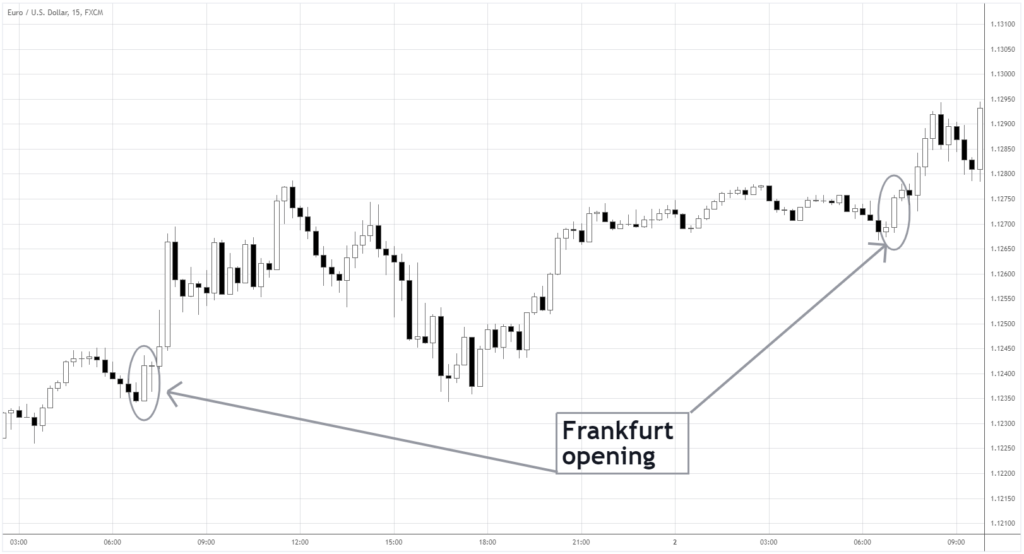
As the image above shows, we can expect some impulses in the first hour after Germans start trading. In those two particular cases, the impulses led to breakouts and uptrend continuation.
The next example shows another context for the entry setup after the opening.
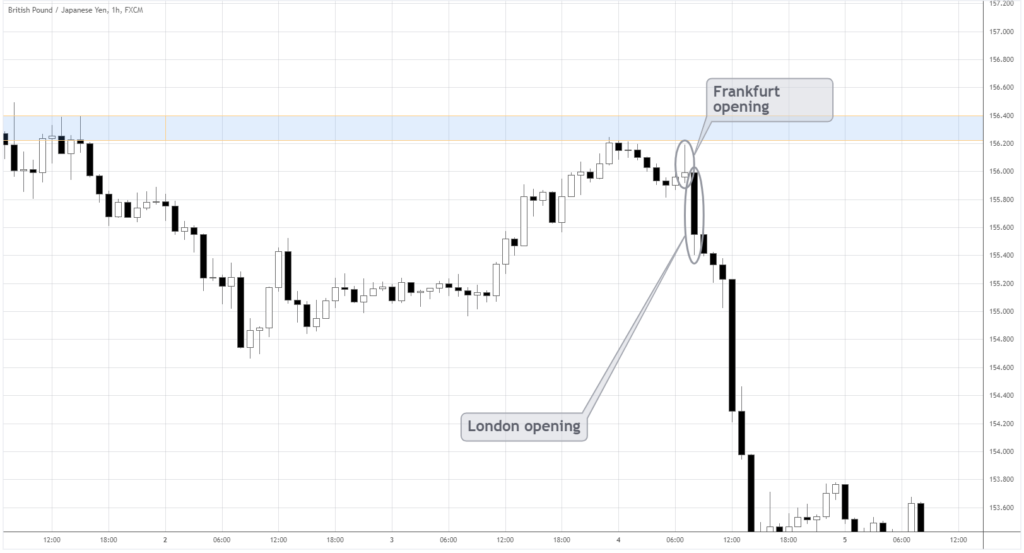
When Frankfurt opened in the illustration above, it caused a brief move that was quickly absorbed, forming a pin bar (see the circled candle with a long upper wick). The buyers struggled to push the market higher, apparently due to proximity to the resistance around 156.20-156.40, revealing the first signs of prevailing supply.
The screaming confirmation of such a thesis arrived at the London opening, causing the prices to crash and continue the day in the same manner.
Let’s talk about London.
London pumps up the volume (08:00 UTC)
If you look up what they mean by the start of the European session, usually it implies London opening. There is a good reason for that – around 30% of all FX transactions happen during London trading hours. The session is very liquid, so most Europe-based scalpers and day traders focus on this time window due to super-tight spreads.
If you’re waiting for hours or days for some technical setup to form and the market to provide an entry trigger, expect it to happen at the London opening.
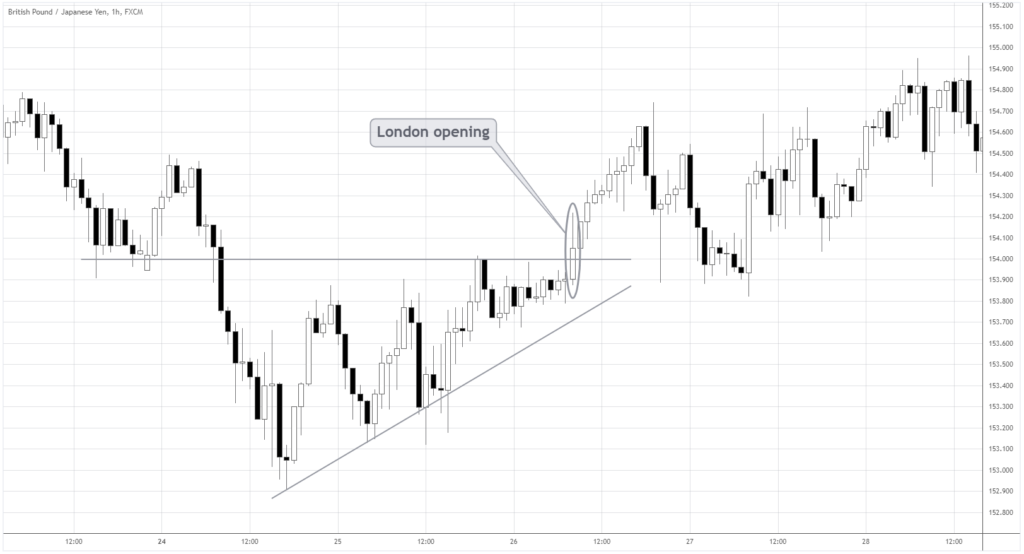
GBPJPY chart above formed an ascending triangle for a while, but the breakout happened particularly at the London opening. When you plan your trades, it’s very prudent to take into account such crucial times.
Many intraday trends start at the London opening and may reverse during the American session.
Singapore leaves the field (09:00 UTC)
The last Asian market, Singapore, closes, significant liquidity that held the market within an “Asian box” (see the blue area below) disappears. As the price is left entirely at the mercy of Europeans, the Asian stops are often hunted.
The USDJPY chart below shows how easily the market reached the low of the Asian session within just 15 minutes. Later on, after the short-term traders were supposedly shaken off, the prices recovered to previous highs.
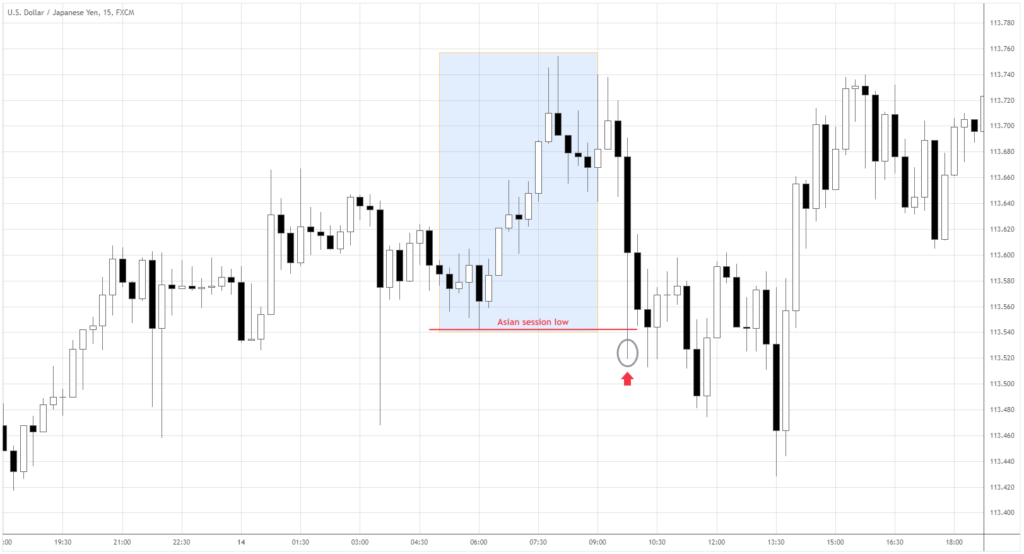
If you opened your position during the Asian session and base your stops on, say, price action during Tokyo hours, you better watch out.
Middle East is going to close (11:00-12:00 UTC)
What comes to your mind when you hear about the Middle Eastern markets? If you thought about crude oil, you are not alone. Remember, oil is quoted in US dollars, so any oil transaction involves greenback.
What happens when the biggest oil-producing markets close? -The dollars aren’t needed anymore, so we can expect weakness in USD as Dubai and Riyadh finish working day.
Although such a phenomenon is usually short-lived, the expected dollar outflow can give us clues in certain market circumstances.

The EURUSD chart above portrays three examples of exploiting dollar weakness as a catalyst for trading a broader setup.
1 – after a sharp decline, we would wonder when the pullback should start; a petrodollar dump is a good trigger to enter a countertrend move.
2 – the market broke down below 1.1540, while the expected dollar weakness marked the inability of bulls to get back above the critical level (if the dollar should be weak but instead it’s growing, it tells something).
3 – if you are waiting for a range breakout in a major pair, Middle Eastern closing is the time to consider.
US opening and the powerful overlap (13:30-14:30 UTC)
If you’re looking for the most volatile time of the day, here you go. New York opening that is overlapping with European session is the time of highest liquidity and most dramatic fluctuations.
See it for yourself in the EURUSD image below (orange ovals).

In the example above, all the biggest candles are during the US opening. There are many economic releases during the first couple of hours of the session. The variety of possible setups during US-Europe overlap is immense, and the moves are driven by big volume; so, take them seriously!
Europeans are off work (15:30-16:35 UTC)
On the 2nd hour post-New York opening, Europeans end their working day as banks and exchanges close.
If there was a significant move prior, many European are likely to close their positions, grabbing what they profited from.
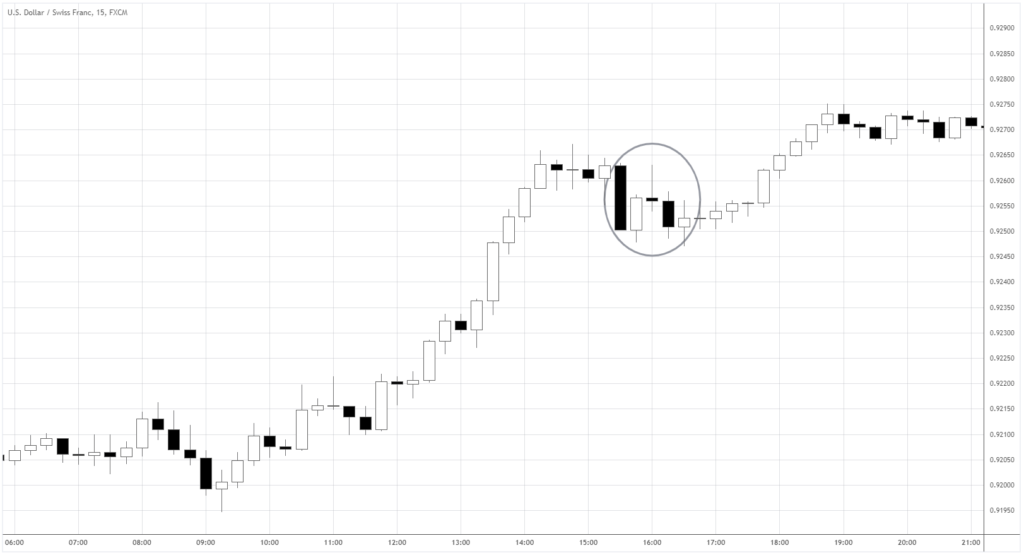
Such a liquidation often results in a pullback, like in the USDCHF example above.
Sometimes the countermove can get pretty nasty, reversing the whole thing completely.
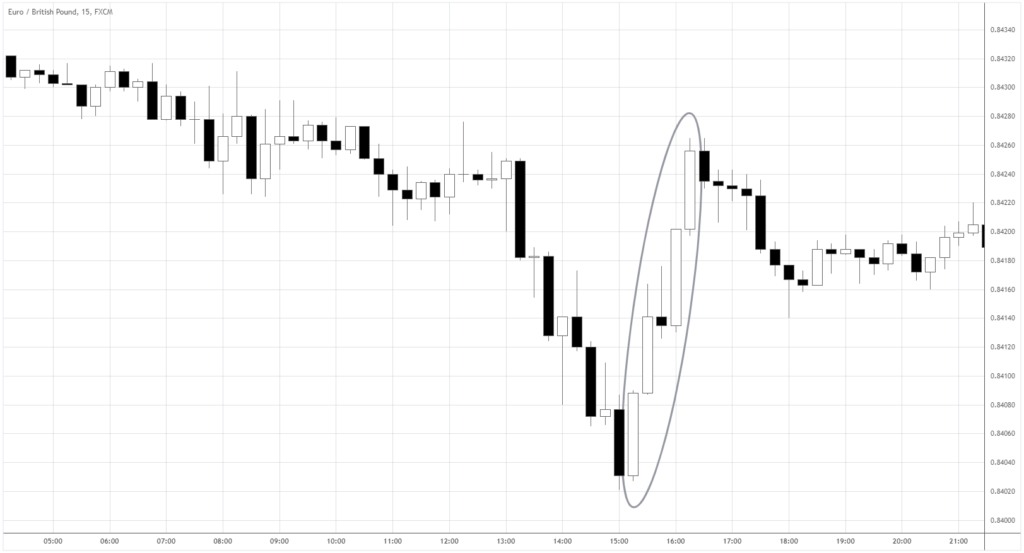
Euro recovered all the losses during the US session in the EURGBP illustration above.
US closing and the end of the trading day (20:00-21:00 UTC)
The US traders finalize the whole forex session in the last hour of the working day in North America.
Big institutions usually analyze the closing prices of the day to place huge orders. So, expect some sharp moves at the end of the US session, especially on Friday.
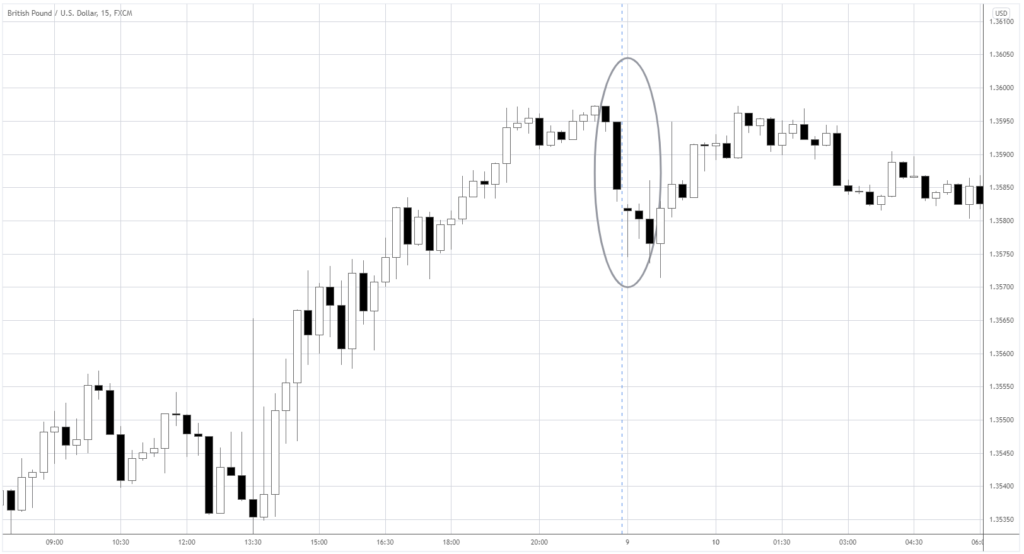
If there was a preceding trend, many high-stake traders would take profits, causing a retracement, which may last till Tokyo’s opening. The GBPUSD example above shows a deep pullback (see the circled area) in the final hour of the week, which continued on Monday with a gap-down.
Conclusion
European and the US sessions, and especially their overlap, cause the highest volatility compared to other times on the forex trading day. Big moves present opportunities with favorable risk/reward and increased trading volumes enhance the reliability of price action signals. You can dramatically improve profitability by merely trading at the proper times of the day.







